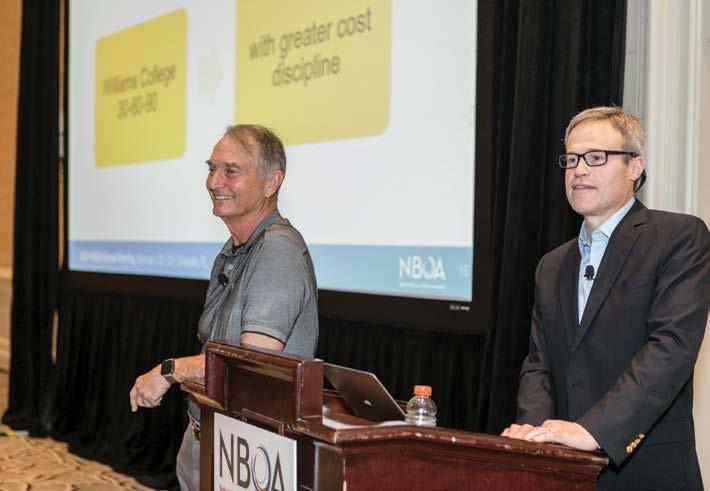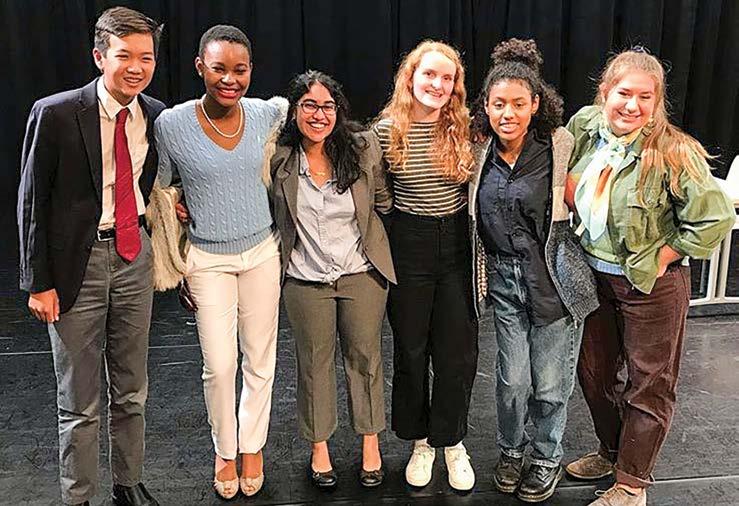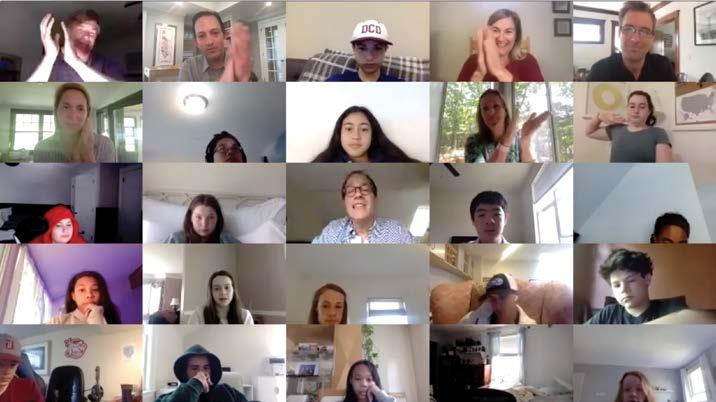
6 minute read
DCD Staying Connected During the Pandemic
Distance Learning
DCD Staying Connected During the Pandemic
Advertisement
As the COVID-19 pandemic took us into the world of distance learning and virtual schooling, our connected community has taken on another dimension. Having reconfigured our learning community to function in this temporary state of physical separation, the power of connectedness continues to drive everything we do. Collectively and creatively, while prioritizing well-being, we have built a successful distancelearning program to meet the needs of our students and families from pre-kindergarten to grade 8.
Teachers have used a combination of synchronous and asynchronous learning models to keep our students engaged in every aspect of our curriculum, from academics to arts, to athletics and service-learning. During the spring, we continued to adjust our programming based on student and family feedback as well as our growing knowledge as teachers.
The excellence we’ve come to associate with a DCD education still defines our program. With these new methods and approaches, we have continued to deliver an education that is challenging, inclusive, and engaging and reflects our mission and priorities. Our community is resilient, flexible, and creative and remains committed to the power of connected learning, whether in person or remotely via computer.
Spring sports took place remotely, as did the year-end celebration with coaches and players.
A Sampling of Projects by Grade PRE-K Insect Study Pre-K ended the year with a study of insects. They made insects from clay, paper shapes, watercolors, and even from junk. One of the highlights was when Mrs. Jackson and Mrs. Swan delivered two caterpillar containers and a butterfly box to each Pre- K student’s home on May 6. The students made daily observations of their caterpillars, named them, drew pictures of them, and studied the butterfly life cycle. They watched as they changed to chrysalids and then finally to butterflies. The butterflies stayed in their butterfly boxes for several days before being released into the wild.
KINDERGARTEN Eric Carle Author Study In Mrs. Price’s Kindergarten class, students studied the author Eric Carle, using art, science, and making food in the kitchen to enhance their enjoyment of the book The Very Hungry Caterpillar.
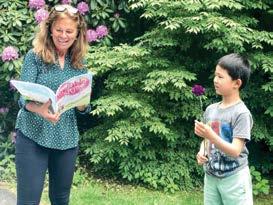
The Invisible String Mrs. Maloney delivered a “Snuggle Bag” of goodies to her students, containing their artwork and items from the classroom. The bag included two gifts from her: an art set and a book The Invisible String. She explained how even though we have been apart, we will always be connected by a string of love.
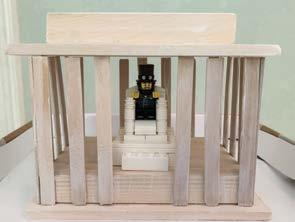
FIRST GRADE US Symbols and
Landmarks First graders in Mrs. Senese’s class studied United States Symbols and Landmarks in Social Studies, their final project of the year. Because it had such a strong independent project component, it worked
out even better for distance learning than in the classroom. Students had a week to learn about a symbol or landmark of their choosing. The assignment was to describe what the symbol represented, share one or two interesting facts about it, and tell why they chose it. Their project was to make a poster, model, or drawing to teach others about it. They shared their work through their morning Zoom call, and the wealth of information they learned from each other was incredible!
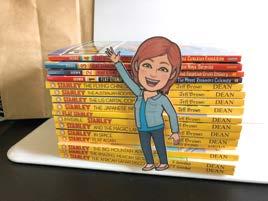
GRADE 2 Flat Stanley Mrs. Holden’s second-graders delved into the Flat Stanley books with their project “The Adventures of Flat Mrs. Holden.” Students received a Flat Mrs. Holden and a book from the series, each receiving a different one. Students took pictures with Flat Mrs. Holden on adventures with them. Students enjoyed the adventure in the book with Flat Stanley and then sent the book to a peer.
GRADE 3
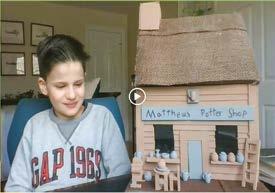
Colonial Trade Shops As part of their study of Colonial times, children built their trade shops at home as usual, but instead of putting them on display at school, where they would give “tours” in person on Grandparents’ Day, they gave “virtual tours” using video.
Pioneer Laundry Third-graders read a book about Clara Brown, Aunt Clara Brown Official Pioneer. She made her living by doing laundry for pioneers on the Oregon Trail and eventually made a business of it when she landed in Colorado. Teachers gave students the assignment to try and do laundry the “pioneer way” and the modern way and to keep notes on the differences, including how long it takes to complete it each way.
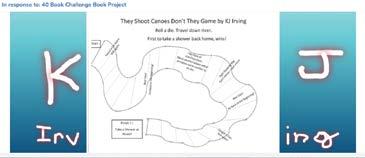
GRADE 4 Inside Out and Back
Again Fourth-graders found new ways to enhance their reading assignments. Students created a Google Earth tour to show the places where the main character from Inside Out and Back Again lived during the course of the novel.
GRADE 5
The Odyssey The fifth grade adjusted its annual Odyssey Storytelling Project to fit the distance-learning model. After hearing a professional oral retelling of The Odyssey in its entirety, fifthgraders chose their favorite sections of the story, read various versions of these parts, and created their oral presentations of their sections of the epic tale. Students practiced together live in Zoom breakout rooms, but they also practiced at home and uploaded video performances via Google Classroom. Classmates and teachers provided both synchronous and asynchronous feedback on these videos, which students addressed in subsequent practice sessions. They uploaded their final polished toga-clad performances before the end of school, which were combined into an iMovie showing the complete story from “The Belly of the Horse” to Odysseus’ “Battle in the Hall.” Current Ithaca College film student, Charlie Bemis ’13, produced and edited the movie! Instead of a live performance followed by a Greek Feast at DCD, fifth-grade families enjoyed Greek takeout and a special family movie night at home this year.
THE ARTS Woodworking The school-wide Airplane Challenge resulted in some fantastic work. The project was for students in any grade to build an airplane out of materials they could find around the house (recycled materials encouraged!). Each grade had different prompts, for example, to decorate it, or add a stabilizer, cockpit, or propeller. The overarching goal was to see how long students could get their planes to stay in the air. Kits were not allowed, and students were encouraged to make multiple versions of their planes, refining their designs along the way. The Whirlygig project is modeled after a Colonial-era toy that has been used for hundreds of years by children around the world. Also called a buzz saw, these spinning toys can be made of paper, cardboard, or wood. Student design skills were challenged by creating options around material choice, shape, size, and decoration. Some questions asked were: how fast can yours spin? Can you get it to make a sound or change colors when it spins? What aspects of your design make it go faster or slower or be louder or quieter?
Plays
This spring, Ms. Sidoli directed the first-graders in their class play, “The Little Acorn.” Their wonderful expression and acting skills shone even on Zoom. The students enjoyed getting ready for their play, and even had enthusiastic audience members cheering them on in the wings! 19





